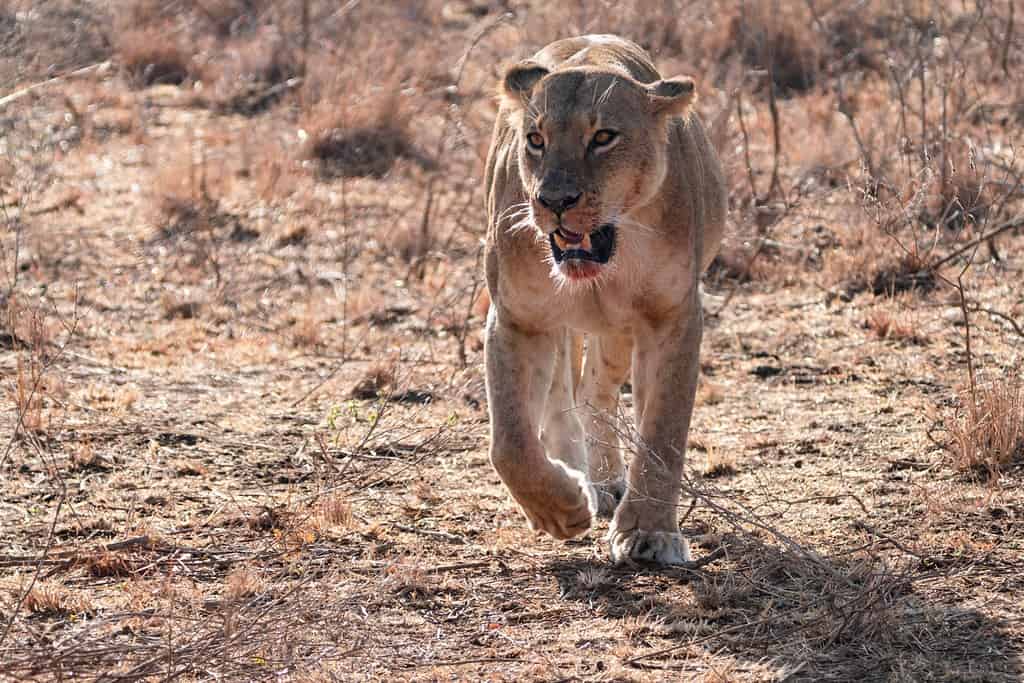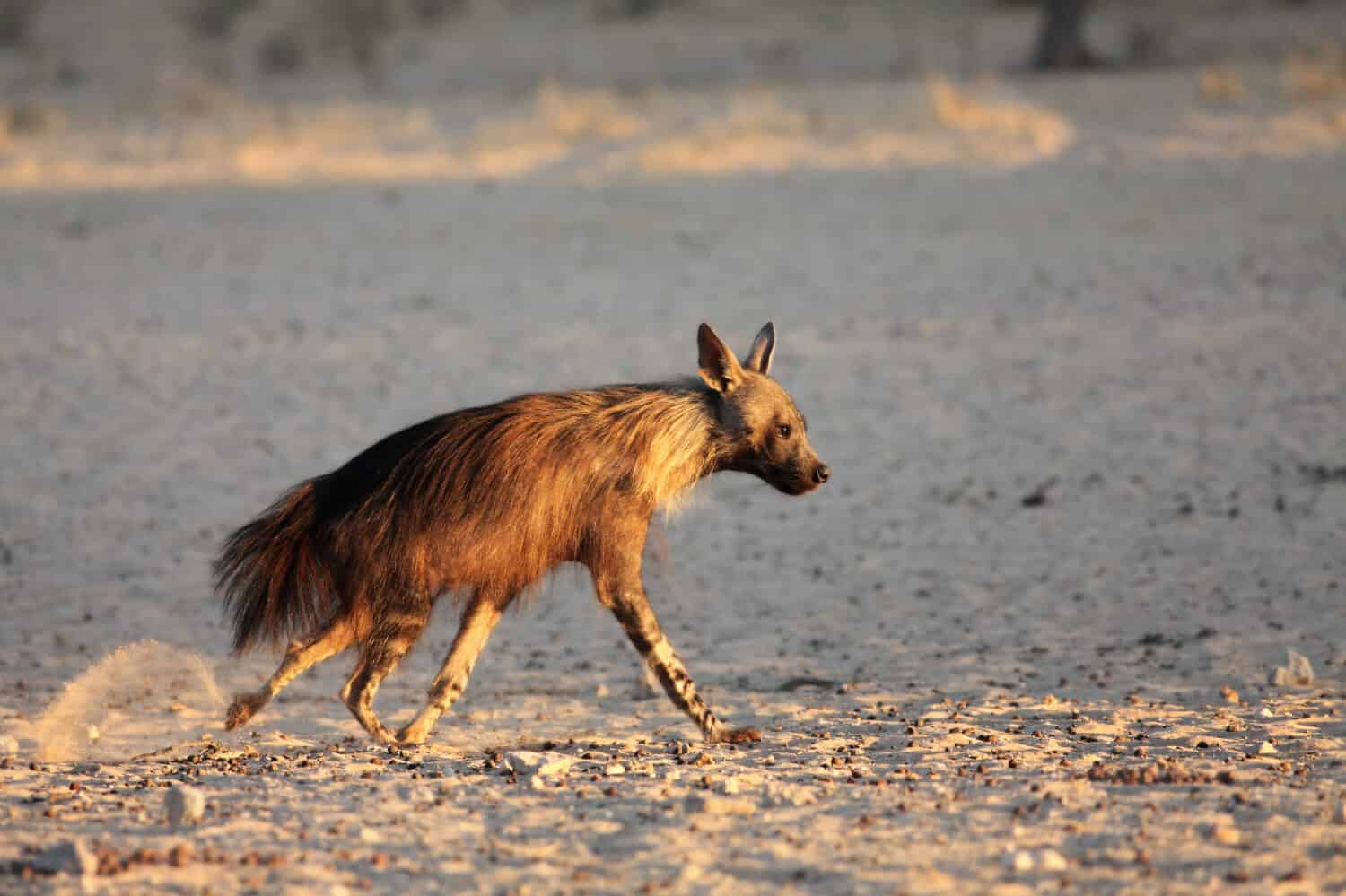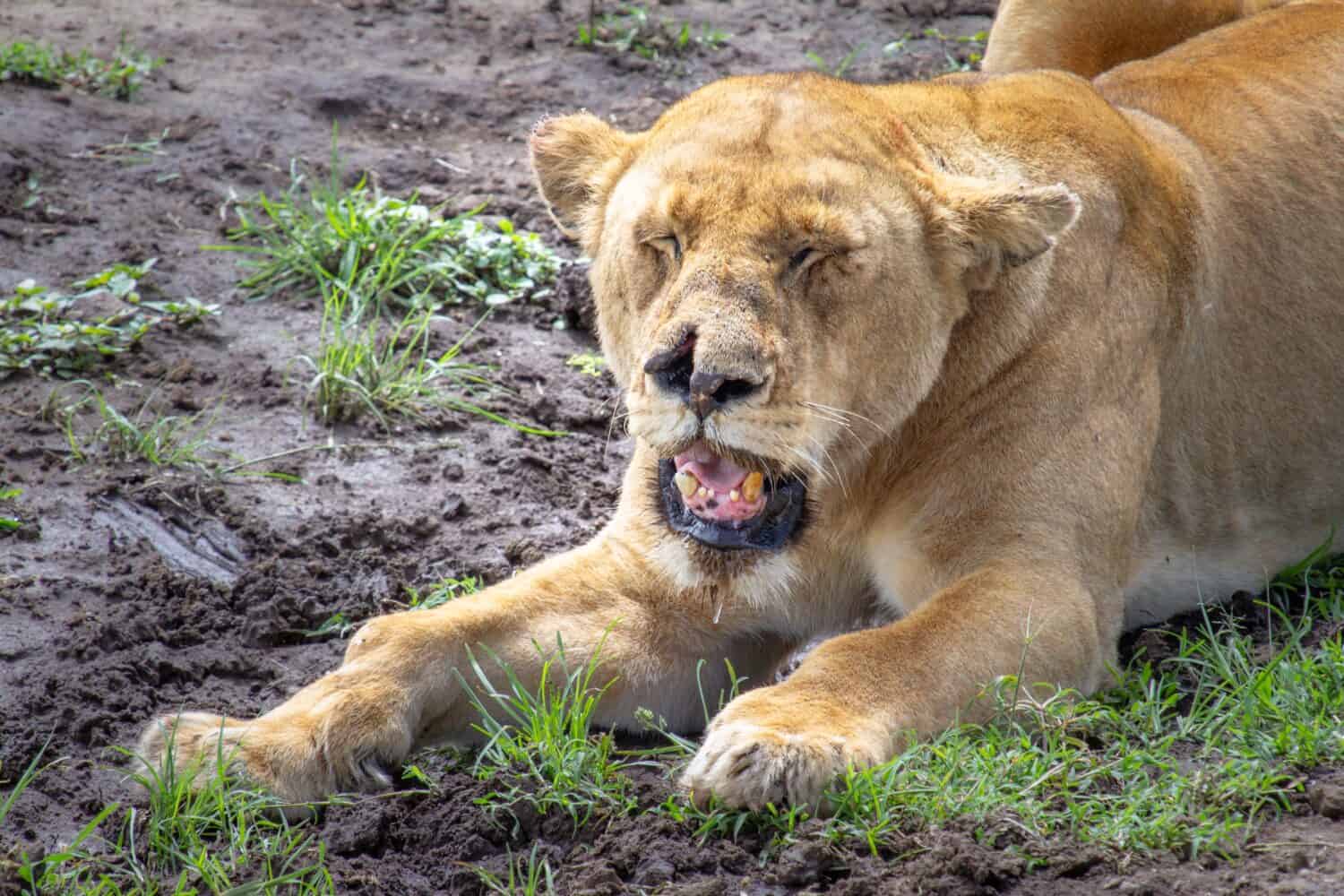Lurking Lioness Erupts from the Savannah Grass to Ambush a Brown Hyena!
In the vast expanse of the savannah brush, the gripping encounter visible below unfolds. A lioness, cloaked in the hues of the golden grass, stealthily closes in on an unsuspecting brown hyena feasting upon a carcass. Unaware of the impending danger, the hyena remains engrossed in its meal. The lioness inches closer with each passing second. The hyena’s swift reflexes prompt it to glance back at the noise. But that split-second distraction may seal its fate.
Watch this Incredible Tense Chase Between a Huge Lioness and Shaggy Hyena Unfold!
Realizing the peril, the hyena desperately tries to flee in the opposite direction. It’s fully aware of the enormous strength disparity between them. Curiously, it appears the lioness has second thoughts about engaging in a full-fledged battle. Instead, she opts to nip at the heels of the fleeing creature. Gradually, the hyena seems to recognize that it should have been captured by now. With a sudden revelation, it turns to confront the relentless lioness, spelling the climax of the thrilling video below.

A lone lioness is a formidable foe to a brown hyena, which is smaller, weaker, and slower than the queen of the jungle!
©melissamn/Shutterstock.com
A tense standoff ensues as both animals size each other up. Then, just as quickly as it had turned before, the hyena pivots on its heels and resumes its frantic sprint. This time, the lioness chooses not to give chase, her focus shifting to the prized carcass the hyena had been enjoying. The video captures the raw and unforgiving reality of the savannah, where survival instincts clash in a primal dance between predator and prey. The lioness emerges victorious, claiming the hard-earned prize left behind by the fleeing hyena, as the great circle of life continues to play out in the heart of the African wilderness.
What Sets a Brown Hyena Apart from the More Widely Known Spotted Hyena?
Spotted hyenas (Crocuta crocuta) and brown hyenas (Hyaena brunnea) display notable differences. They differ in their physical attributes, social behavior, and life cycle, with the latter boasting a distinct maned appearance. Physically, spotted hyenas are larger and more robust than brown hyenas. They are equipped with a striking spotted coat and a powerful build suited for endurance chases to capture prey. In contrast, brown hyenas possess a shaggier and unkempt appearance. They feature a sandy or light-brown coloration and are comparatively smaller and more slender. Additionally, their unique mane of long, dark hair runs down their neck and back, setting them apart from their spotted counterparts. As we see in the video below, this shaggy mane helps the hyena blend into tall grass. However, it doesn’t hide them well enough to escape from a lioness!

Spotted Hyenas chase a lioness away, able to rely on the bravery of each other and sheer numbers to protect themselves.
©MintImages/Shutterstock.com
Socially, spotted hyenas form tightly knit and hierarchical clans, often comprising up to 80 unique members with different personalities. Within these clans, females take on dominant roles, establishing a matriarchal social structure. The clans work cooperatively during hunts and fiercely defend their territory from rival groups. On the other hand, brown hyenas prefer a more solitary and secretive lifestyle. They tend to roam and forage alone or occasionally in small family groups, and their interactions with other individuals are relatively infrequent, leading to a more independent way of life.
Regarding their life cycle, spotted hyenas have an extended reproductive period. Females typically reach sexual maturity at around two to three years of age. They undergo a prolonged gestation of approximately 110 days, resulting in the birth of usually two cubs. These cubs are nursed for an extended period. In contrast, brown hyenas have a more compact reproductive cycle. Females become sexually mature at an earlier age, often around one to two years. Their gestation period is shorter, typically lasting about 90 days. Despite their solitary tendencies, brown hyena mothers exhibit dedicated care for their offspring. This ensures their survival in the challenging savannah environment.
Are Brown Hyenas More Independent Than Their Spotted Relatives?

A brown hyena runs across a sandy patch, with its long mane flowing behind it!
©Jan Hejda/Shutterstock.com
Brown hyenas are generally considered to be more solitary than their spotted hyena cousins. Unlike spotted hyenas, which form tightly knit and hierarchical clans, brown hyenas tend to roam and forage alone or in small family groups. This preference for solitude results in relatively infrequent interactions with other individuals. Brown hyenas often lead more independent lifestyles, relying on their instincts and cunning to survive in the challenging savannah environment. The isolated brown hyena in the video below likely wishes for a few friends in its hour of need! Their solitary nature allows them to be more elusive and secretive, making them less dependent on clan support for hunting and territorial defense. While both species are highly adaptable and successful predators, the brown hyenas’ inclination towards a more solitary existence sets them apart from their more socially oriented spotted hyena relatives.
Why Would a Lioness Decide to Avoid a Fight with a Much Weaker Hyena?

Injured lioness shows off a brutal scare to her nose. Whether in hunting or a fight within the pride, lionesses know that any violent interaction could seriously harm them.
©Chedko/Shutterstock.com
The lioness in the exhilarating video below may choose to avoid the fight with the hyena. This is due to the potential risks that come with any fight in the wild, no matter how imbalanced. Engaging in a risky confrontation with a hyena might lead to injuries. These injuries could hinder the lioness’s ability to hunt and survive in the long term.
A lioness risking her life in a solo battle against a hyena might leave her pride vulnerable, including any potential cubs she is raising. It could decrease their chances of successful hunting or defending their territory. The lioness may have recognized the hyena’s agility and escape capabilities, making the pursuit more challenging than anticipated. Hence, the lioness opts to let the hyena escape. This allows her to conserve her energy and focus on securing more reliable opportunities for sustenance and protection, such as the now unguarded meal she just bullied the hyena off of.
The photo featured at the top of this post is © EcoPrint/Shutterstock.com
Thank you for reading! Have some feedback for us? Contact the AZ Animals editorial team.






